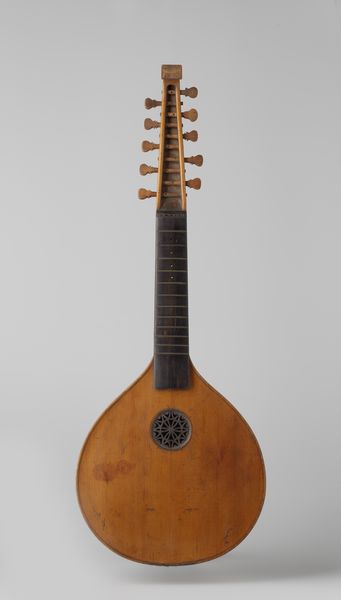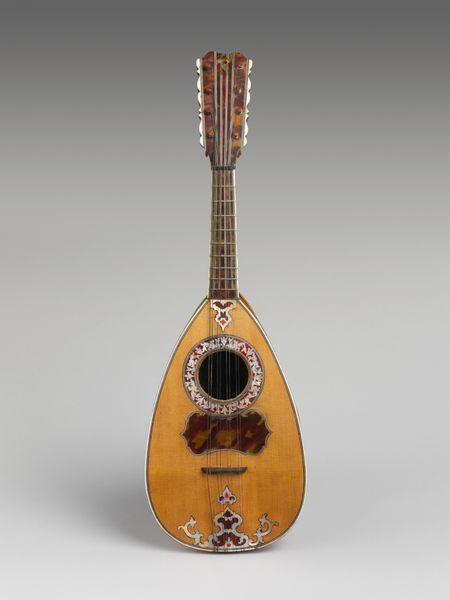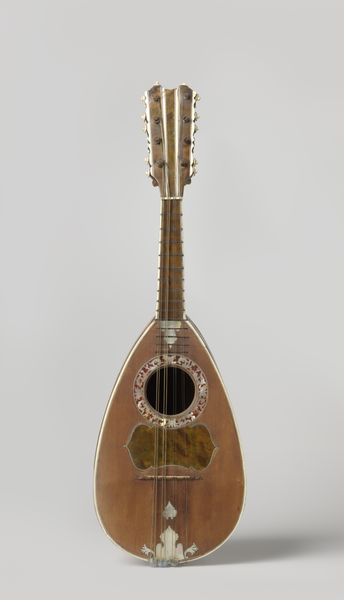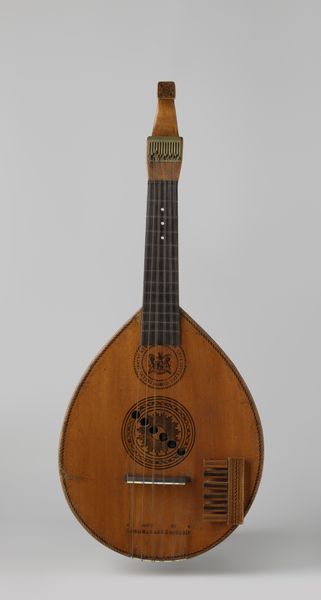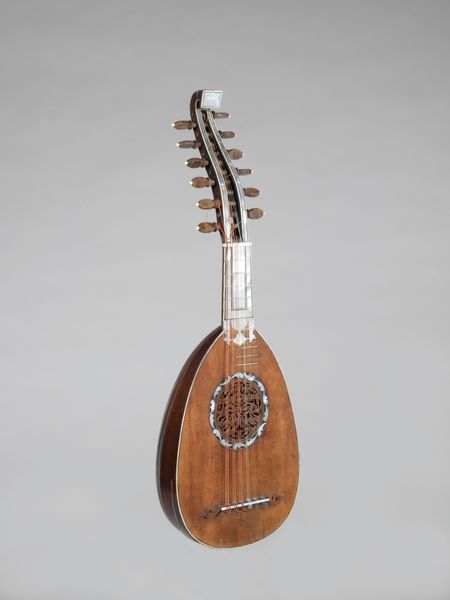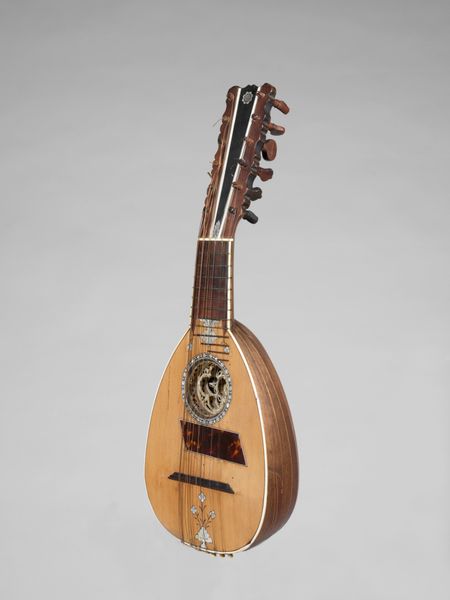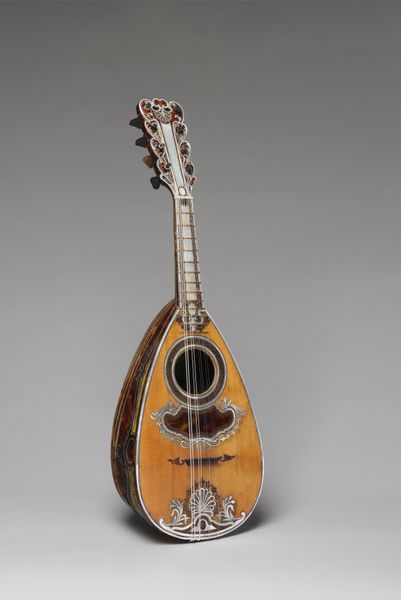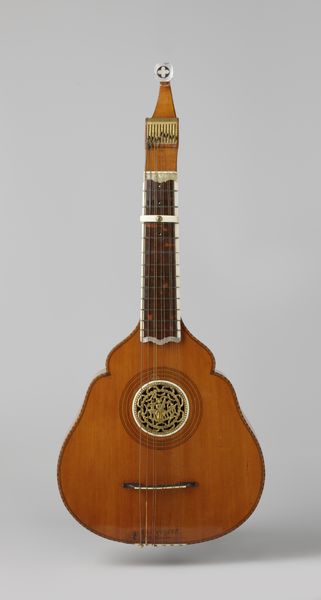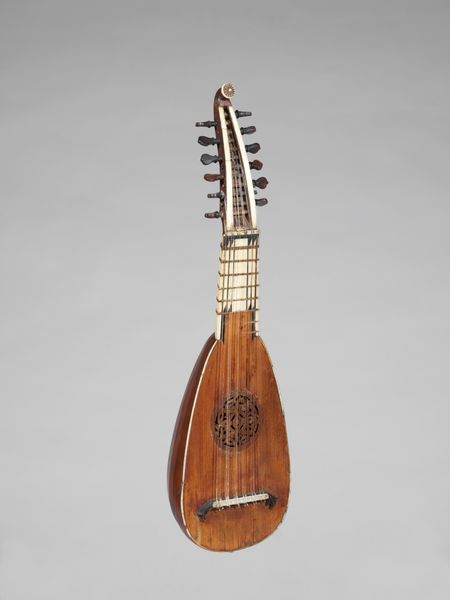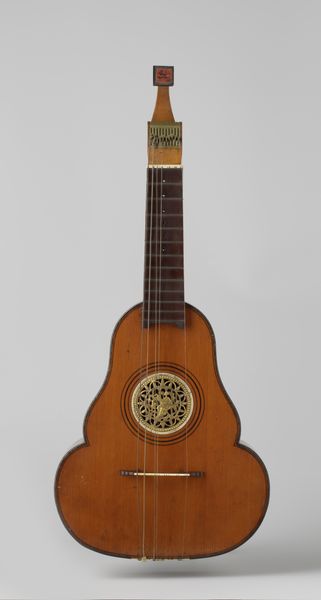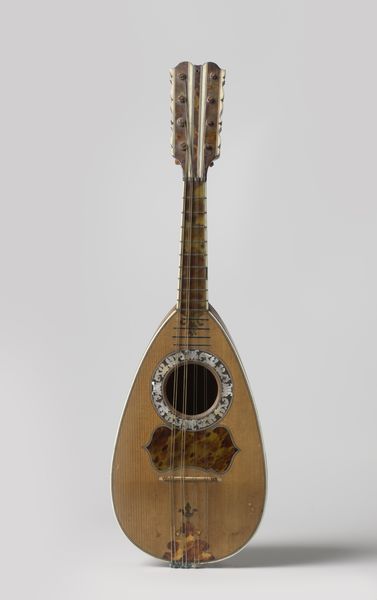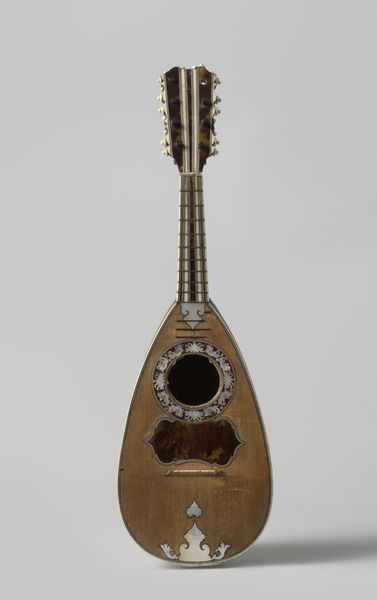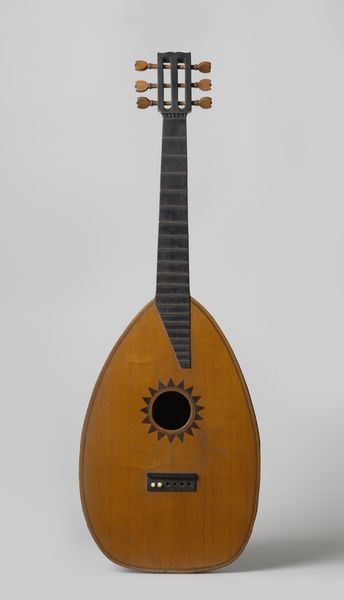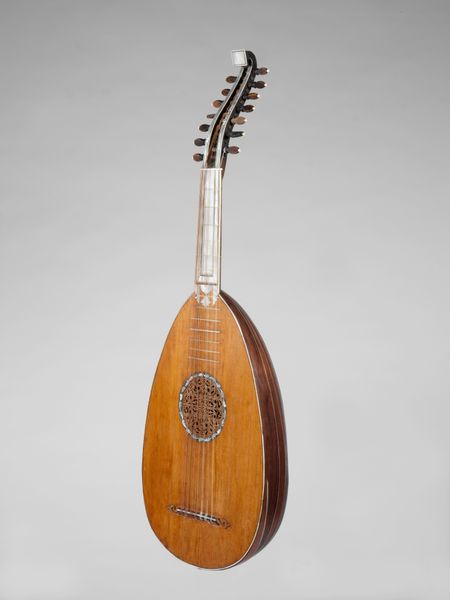
wood
#
wood
#
musical-instrument
Dimensions: Diam. outer rim: 25.1 cm (9-7/8 in.); Total L.: 98.5 cm (38-7/8 in.); String L.: 63.5 cm (25 in.)
Copyright: Public Domain
This banjo was made by Benjamin Bradbury, using wood, metal, and skin. The dark wood of the neck and rim, probably stained to deepen its color, contrasts with the pale, stretched membrane that forms the instrument’s resonating head. The banjo’s history is deeply intertwined with the African American experience. Enslaved Africans in the Americas created early versions of the banjo based on West African lutes. This particular banjo represents a later stage in the instrument's evolution. We see its assimilation into mainstream American culture through its refined construction and materials. Consider the labor involved in its creation: from the harvesting and curing of the wood, to the tanning of the animal hide, to the metalwork of the tuning pegs and brackets. Each of these processes represents a chain of human effort, connecting the instrument not only to its maker, Bradbury, but to a larger network of production and consumption. Appreciating the banjo means understanding these histories of material transformation, and the cultural exchanges that shaped its form and sound.
Comments
No comments
Be the first to comment and join the conversation on the ultimate creative platform.
